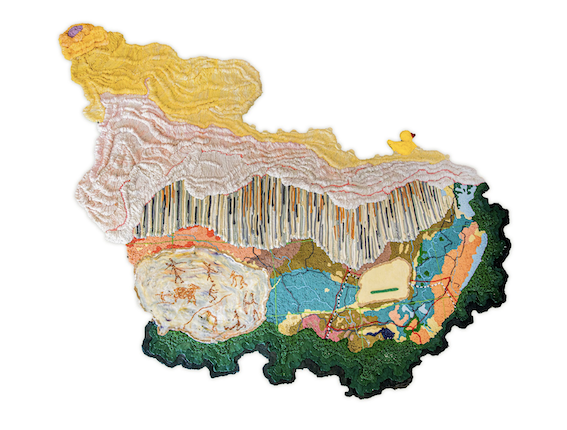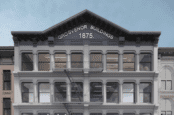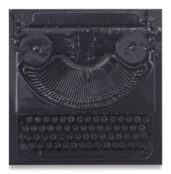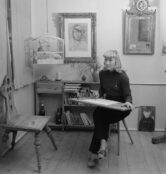The Musée d’Art et de Culture Soufis MTO is a little mystical jewel of a museum, presenting art as spiritual encounter, and spiritual encounter through art, and it is well worth the journey, both inner and outer to encounter what they offer.
The Musée d’Art et de Culture Soufis MTO (MACS MTO) aims to offer a platform for cultural exchange, social interaction, and spiritual discovery. A permanent collection of symbolic, decorative and everyday objects relating to Sufism and a programme of contemporary art exhibitions, talks, events and workshops, reveals the rich contribution Sufism has made to global art and culture throughout history, from the musical traditions inspired by poets such as Rumi to its impact on architecture.
Sufism has enabled its practitioners to take a path towards self-knowledge and mindfulness since the seventh century. The Museum aims to establish a dialogue between the principles of Sufism and ideas presented through contemporary art and culture. Un Ciel intérieur (An inner Sky): The Inaugural exhibition of the Musée d’Art et de Culture Soufis MTO features the works of seven international contemporary artists selected for their connections and affinities to Sufi values and relationship with spiritual thought and contemplation. Their work is presented in dialogue with the collection throughout the Museum. Across generations and geographical borders, encounters with both contemporary work and Sufi objects underscore the universality and ongoing nature of the inner exploration that is central to Sufism.
The artists, many producing new works for the exhibition, are Bianca Bondi (South African, b. 1986), Monir Shahroudy Farmanfarmaian (Iranian, 1922–2019), Seffa Klein (French-American, b. 1996), Troy Makaza (Zimbabwean, b. 1995), Chloé Quenum (French-Beninese, b. 1983), Younes Rahmoun (Moroccan, b. 1975) and Pinaree Sanpitak (Thai, b. 1961).
Un Ciel intérieur unfolds through the three levels of the Museum’s building and garden with contemporary works located throughout the permanent collection displays. A metaphorical inner exploration of body, mind, and spirit (the heart), invites visitors to connect symbolically with the earth, sky and cosmos, in an upward movement towards their own inner sky.

The seminal mirror-mosaic works of one of Iran’s most respected artists, Monir Shahroudy Farmanfarmaian are complemented by the work of Seffa Klein, granddaughter of artist Yves Klein, who has created luminous paintings made using the technique of electrochemical oxidation to create a range of colours from the heavy metal bismuth. Similarly, Bianca Bondi uses chemical reactions in her sculptures, such as oxidation and crystallisation, to explore the transformation of matter and life.The influences of Sufism, Zen Buddhism and meditation on Younes Rahmoun are reflected in his use of colour, form, numbers and concepts. Pinaree Sanpitak, known for her exploration of femininity, motherhood and spirituality, has created new paintings in response to the Museum’s collection of kashkūls and its resonance with the recurring vessel motif in her work.
Troy Makaza has made a new woven-silicone installation inspired by ideas of visibility and invisibility, exploring prominent Sufi themes of the transformation of elements and the symbolism of plants. Chloé Quenum references the role that objects play in circulating knowledge as she continues her exploration of archives with a new installation inspired by the collection and the garden.

The permanent collection of decorative and everyday objects features sculpture, music, textiles, calligraphy, manuscripts, and ceramic and mirror mosaics. Often imbued with symbolic and spiritual meaning, the collection largely dates from the 19th century to the present day. A monumental granite kashkūl sculpture (1974–76), modelled on the distinctive travel accessory of darvishes – Sufi seekers who embrace an ascetic life in pursuit of divine illumination. Kashkūls, a Persian term for alms bowls, were carefully hollowed and polished from the coco de mer seed. Stripped of their fruit and smoothed by their journey across the sea, kashkūls are symbolic of the Sufi journey of spiritual purification and enlightenment.
The collection also features a number of exquisitely crafted 17th and 18th century padlocks shaped like lions, peacocks, and doors. Padlocks are a metaphor for the human heart and the opening of the lock symbolises the freeing of worldly desires, in order to rise spiritually and reach enlightenment. And, a rare khirqa – a cloak passed to successive Sufi masters – in vivid ochre colour features embroidered sheepskin and wool and shows the repairs of its many wearers. The simplicity of the rough wool demonstrates the humility of the Sufi – a word thought to originate from the Arabic suf meaning wool.
Gardens are considered to be an earthly paradise for Sufi seekers and MACS MTO’s garden will provide a
tranquil and meditative space for individuals and events. It will feature both the symbolic flora typical of Persian gardens, such as cypresses, fruit trees, roses and jasmines, alongside plants and flowers often found in France.
The first of three commissioned sound installations features a meditative and introspective composition played on setār and harp. A second features a diverse range of musical instruments, such as the kamāncheh, kavāl and oud, and musically represents the geographical spread of Sufism. On the museum’s highest level, a dome (or gonbad) immerses listeners in poetic Sufi verses sung in Persian and Arabic in a style known as Masnavi.
The museum also features a recreation of a typical 1970s Iranian office furnished with artefacts that belonged to Hazrat Shah Maghsoud, the 41st master of MTO Shahmaghsoudi®, such as Antiquarian books, calligraphic manuscripts and personal objects. These reflect his deep commitment to the study of the sciences and the depth of his spiritual quest while a hologram of the master shows him sharing the spiritual teachings of Sufism.
Alexandra Baudelot, Director of Musée d’Art et de Culture Soufis MTO and curator of Un Ciel intérieur, said: “The Museum creates space for dialogue between audiences and artists, for people of all faiths and none. Through the growth of our collection, diverse programmes, and collaborations with contemporary artists and multidisciplinary thinkers, we look forward to developing a wider understanding and engagement with the rich cultural expressions of Sufism through discovery, culture, and scientific research.”
The Museum is located on the banks of the Seine in the Parisian suburb of Chatou, facing the historic Île des Impressionnistes and housed in a 19th-century mansion. Acclaimed French scenographers Atelier Maciej Fiszer and architects Ducatillion Gimel have worked with the museum on planning, development and design, to facilitate its transformation into an accessible and environmentally sustainable cultural space, preserving original features, such as wall and ceiling cornices, mosaic tiling, a Neoclassical pediment and the ultramarine blue of the building’s facade. The Museum includes 600 square metres of exhibition space across three floors as well as a serene garden and an archival research library.
The establishment of the Museum was initiated by the Maktab Tarighat Oveyssi Shahmaghsoudi – School of Islamic Sufism. Today, MTO Shahmaghsoudi is an international non-profit organisation with around 150 centres worldwide, spanning six continents. They strive to teach the principles of love, unity, and harmony inherent in Sufism and are characterised by openness to students from all backgrounds.
MACS MTO is supported by the philanthropic organisations American Friends of Sufi Arts, Culture and
Knowledge TM (AFSACK®) and Canadian Friends of Sufi Arts, Culture and Knowledge TM (CFSACK®).
Musée d’Art et de Culture Soufis MTO
6 Avenue des Tilleuls | 78400 Chatou | France

The aim of art is to represent not the outward appearance of things, but their inward significance. – Aristotle






















